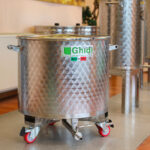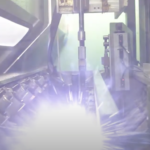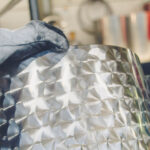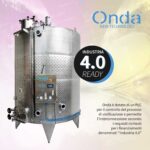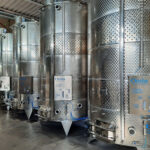Protecting Extra Virgin Olive Oil from Oxygen Using Inert Gas.
Light, temperature and oxygen are the main factors that endanger the organoleptic characteristics of extra-virgin olive oil during storage
Oil is an easily perishable food, but in good storage conditions it can maintain its chemical and organoleptic characteristics stable for several months.
Light and temperature for example can be controlled without difficulty.
Today, technology provides new tools and means that can protect extra virgin olive oil from oxygen e preserve the qualities of our product.
TEMPERATURE AND LIGHT
Constant temperature is one of the secrets to keeping extra virgin olive oil fragrant and fragrant.
The temperature range at which oil should be stored is between 10 and 24°C; the optimum temperature is about 15°C.
Fluctuations in temperature could permanently impair the antioxidant properties of polyphenols and tocopherols, which are also essential elements from an organoleptic point of view.
Light, as electromagnetic radiation, also affects chemical reactions and can therefore cause the composition of an oil to vary.
It would be best to avoid plastic (PVC) containers because some substances could be absorbed by the oil, while a stainless steel container does not release any harmful substances and ensures impermeability to direct light. In addition, if it is not possible to condition the environment where the tanks are stored, it is possible to equip the tanks with heat exchange band for constant temperature control of the contained oil.
AIR AND OXYGEN
In most cases, a series of oxidative reactions develop in any food in contact with air, changing its chemical composition and organoleptic characteristics.
Luckily for them, the extra virgin olive oils, when they are genuine, possess a number of minor compounds, including tocopherols and polyphenols, which, in addition to determining their greater nutritional value, play a very important antioxidant action that can safeguard the oil itself over time.
Despite the protection of these natural antioxidants, prolonged contact of the oil with air results in its rancidity.
A very effective solution to prevent oxidation is to saturate the vessel with an inert gas such as nitrogen or argon.
Both gases are extremely stable, odorless and tasteless, and suitable for coming into contact with food substances, while their physical characteristics are quite different; the choice of one gas over another depends mainly on cost and ease of sourcing (the differences between these two gases will be discussed in more detail in future articles).
STORAGE
The storage technique in which oxygen and atmospheric air are replaced with inert gas is called “controlled or modified atmosphere storage.”
Inert gas can be used with the technique called“blanketing ,” which is used to ensure the absence of oxygen from the “headspace” that is, in the empty part of the storage tank above the oil level.
Inertization involves the introduction of inert gas (taken from special cylinders suitable for food use) inside the steel tanks and its discharge into the atmosphere through vent valves, thus maintaining an internal atmosphere that is always inert and at constant pressure. Products thus protected preserve their qualitative and organoleptic specificities.
Learn more about “controlled or modified atmosphere storage”
>> Also view our catalog of stainless steel oil tanks
>> Download pdf catalog of our stainless steel oil tanks
Ghidi Metals: manufacturers of stainless tanks.

